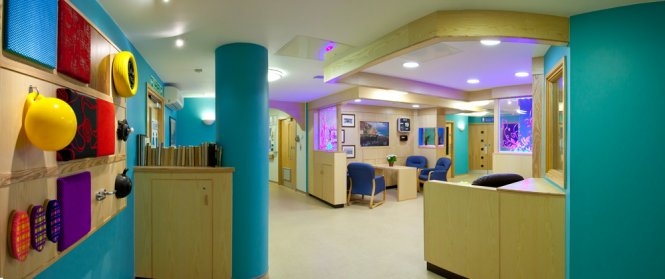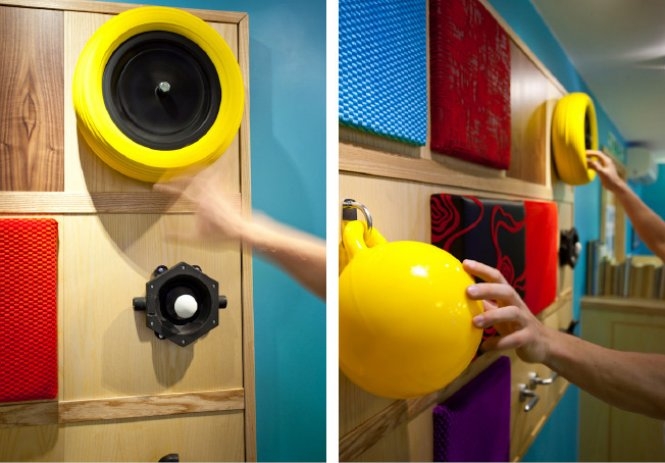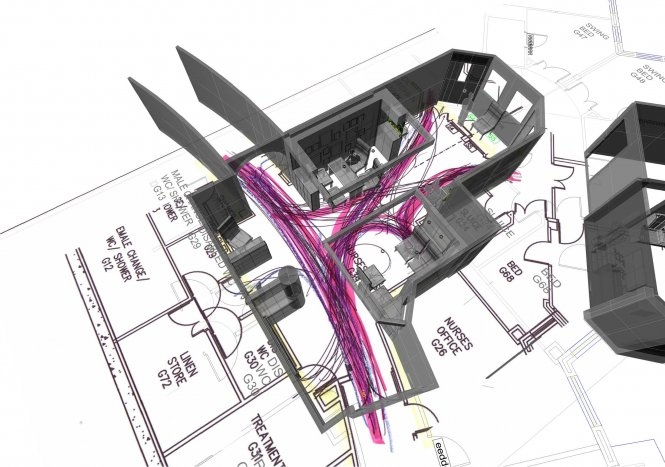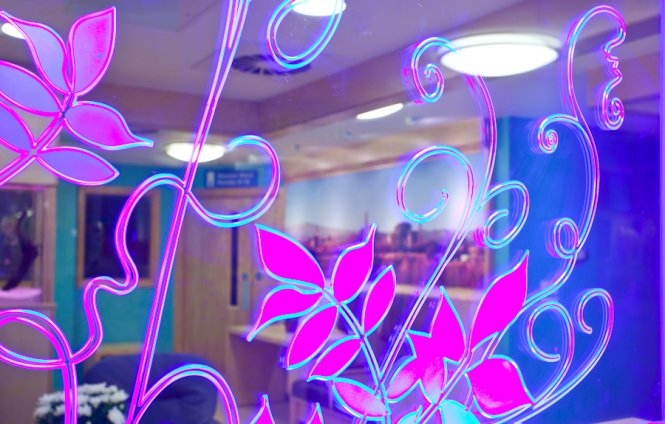View By Date Contact Me
BOEX - DEMENTIA WARD
Posted: 29th October 2013This was a project I found a while ago, in Playful, Educational Spaces by Boex - but thought I would give it it's own page.

http://www.boex.co.uk/projects/dementia-ward
This is another project by Boex and was for a dementia ward for the NHS. The colours are designed to give people with visual impairment the best contrast in order to distinguish from furniture and walls etc.

There is a sensory board as part of the decor - "A sensory board enables stimulation for patients and provokes interaction with staff and family. The board features inter-changeable panels that can be undated dependant on the patients background."

With this, I like the idea, that they can be changed and that it is bright colours.
It does feel a little high for everyone to reach (particularly if they are in a wheelchair perhaps) and quite geometrically set out. In some ways they are creating a 'domestic' space - but this panel doesn't feel domestic. It feels more 'designed' than functional. It looks pretty to designers, but could the fabrics be made into shapes of objects, or part of a narrative?
I wonder though as well; do people respond better to animals and people (things with eyes?) - My experiences with some people are that they respond differently with objects they perceive to be alive - horses, dogs, cats etc.
I no doubt that there is more thinking behind the creation of the space, but I would be interested to know if these were considered.

I like the way the space is currently used as a starting point. How do they get this sort of data though?
It reminds me of a small piece of work I did with a courtyard at uni - following people's patterns of walking. No one ever walked straight through the middle...

I also like the use of this simple light change in this perspex.
Again, looking at how light can affect mood...
Related Themes
Further Reading
Fortuitous Novelties Seedpods

I first came accross Darren Browlett's Seedpods quite sometime ago now and while doing my research it came back to me about their uniqueness and difference.